-
 Bitcoin
Bitcoin $82,710.8499
-3.03% -
 Ethereum
Ethereum $1,793.0497
-6.16% -
 Tether USDt
Tether USDt $0.9997
-0.03% -
 XRP
XRP $2.0245
-5.40% -
 BNB
BNB $588.9681
-3.44% -
 Solana
Solana $119.1214
-6.27% -
 USDC
USDC $0.9999
0.00% -
 Dogecoin
Dogecoin $0.1639
-6.02% -
 Cardano
Cardano $0.6406
-5.69% -
 TRON
TRON $0.2332
-1.69% -
 Toncoin
Toncoin $3.8230
-5.85% -
 UNUS SED LEO
UNUS SED LEO $9.3854
1.36% -
 Chainlink
Chainlink $12.8724
-8.54% -
 Stellar
Stellar $0.2562
-5.91% -
 Avalanche
Avalanche $17.9839
-8.74% -
 Sui
Sui $2.2792
-5.46% -
 Shiba Inu
Shiba Inu $0.0...01202
-5.27% -
 Hedera
Hedera $0.1606
-5.78% -
 Polkadot
Polkadot $3.9509
-5.40% -
 Litecoin
Litecoin $81.5906
-3.66% -
 MANTRA
MANTRA $6.3111
0.24% -
 Bitcoin Cash
Bitcoin Cash $294.0354
-4.83% -
 Bitget Token
Bitget Token $4.4720
-3.32% -
 Dai
Dai $0.9996
-0.04% -
 Ethena USDe
Ethena USDe $0.9998
-0.02% -
 Pi
Pi $0.6540
-7.46% -
 Hyperliquid
Hyperliquid $11.9178
-10.37% -
 Monero
Monero $214.1800
-1.67% -
 Uniswap
Uniswap $5.8136
-7.44% -
 Aptos
Aptos $5.0806
-6.27%
What is the computing power distribution mechanism of mining apps?
Hashrate distribution in mining apps is influenced by hardware, electricity costs, pool participation, network difficulty, profitability, and internet connectivity.
Mar 31, 2025 at 03:56 pm
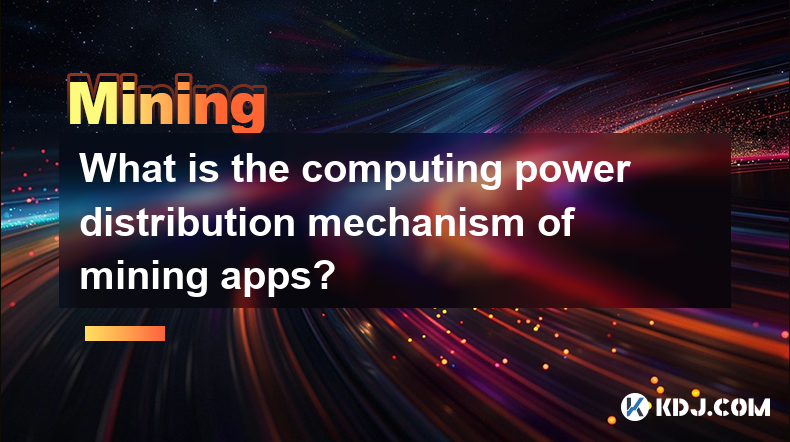
Understanding Hashrate Distribution in Mining Apps
Mining apps, used to participate in the Proof-of-Work (PoW) consensus mechanism of cryptocurrencies like Bitcoin, rely on a distributed network of miners contributing computing power. This power, measured in hashes per second (hashrate), isn't evenly distributed. Understanding how it's allocated is crucial for comprehending the security and profitability of mining. The distribution is inherently dynamic, constantly shifting based on various factors.
Factors Influencing Hashrate Distribution
Several key factors influence how computing power is distributed across the mining network:
Mining Hardware: The type and quantity of mining hardware significantly impact hashrate contribution. ASICs (Application-Specific Integrated Circuits) designed for specific cryptocurrencies dominate, offering vastly superior performance compared to GPUs or CPUs. The more powerful the hardware, the greater the hashrate contribution.
Electricity Costs: Electricity is a major expense in mining. Miners in regions with cheaper electricity have a significant advantage, allowing them to operate profitably even with less powerful hardware. High electricity costs can force miners to shut down or relocate.
Mining Pool Participation: Most miners join mining pools to increase their chances of finding a block and earning rewards. Hashrate is pooled, and rewards are distributed based on the contribution of each miner. Larger pools naturally control a larger share of the network's hashrate.
Network Difficulty: The network difficulty adjusts dynamically to maintain a consistent block generation time. As more hashrate joins the network, the difficulty increases, making it harder to find blocks and earn rewards. This naturally balances the distribution of hashrate to some degree.
Profitability: Cryptocurrency prices and mining difficulty directly impact profitability. When prices are high and difficulty is low, more miners join the network, increasing the hashrate. Conversely, low prices or high difficulty can lead to miners leaving the network.
Internet Connectivity and Latency: Reliable and low-latency internet access is essential for mining. Miners with poor connectivity might experience reduced efficiency, impacting their hashrate contribution.
How Mining Apps Manage Hashrate
Mining apps themselves don't directly control hashrate distribution; they merely provide the interface for miners to contribute their hardware. However, they play a role in managing the process:
Pool Selection: Many apps allow users to choose which mining pool to join. This choice influences where their hashrate is directed.
Hardware Monitoring: Apps monitor the performance of the mining hardware, providing insights into hashrate, temperature, and other crucial metrics.
Reward Distribution (for Pool Mining): Apps facilitate the distribution of rewards earned by the pool based on individual miner contributions (typically proportional to their hashrate).
Software Updates: Apps regularly receive updates to optimize mining efficiency and address potential vulnerabilities. These updates can indirectly influence hashrate performance.
The Role of Mining Pools in Hashrate Distribution
Mining pools significantly shape hashrate distribution. Their size and efficiency influence the proportion of the total network hashrate they control. Large pools have a greater chance of finding blocks and distributing rewards, potentially leading to centralization concerns. However, pools also provide benefits to smaller miners who would otherwise struggle to find blocks independently.
Reward Distribution Mechanisms: Pools use various mechanisms to distribute rewards, including proportional, pay-per-share (PPS), and full pay-per-share (FPPS). Each method has different implications for risk and reward.
Pool Fees: Pools typically charge fees for their services, impacting the net profitability for miners. These fees vary among different pools.
Pool Infrastructure: Larger pools often invest in robust infrastructure, including servers and network connectivity, enhancing their mining efficiency.
Step-by-Step Guide to Understanding Your Hashrate Contribution (within a mining app)
Choose a Mining App: Select a reputable mining app compatible with your hardware and chosen cryptocurrency.
Configure Your Mining Rig: Connect your mining hardware (ASICs, GPUs) to your computer and configure the app to access it.
Select a Mining Pool: Choose a mining pool based on factors like fees, payout methods, and pool size.
Monitor Your Hashrate: The app will display your current hashrate contribution. This number will fluctuate depending on factors like hardware performance and network difficulty.
Analyze Your Earnings: The app will track your earnings based on your hashrate contribution and the pool's reward distribution mechanism.
Frequently Asked Questions
Q: How can I increase my hashrate?
A: You can increase your hashrate by upgrading your mining hardware to more powerful ASICs or GPUs, optimizing your mining software, and ensuring stable and fast internet connectivity. Choosing a more efficient mining pool can also improve your effective hashrate.
Q: What are the risks associated with mining pools?
A: Risks include pool fees reducing profitability, the potential for pool operators to act dishonestly, and the concentration of hashrate in a few large pools, which could raise centralization concerns.
Q: How does network difficulty affect my mining profitability?
A: Higher network difficulty means it's harder to find blocks and earn rewards, reducing profitability. This is a natural consequence of more miners joining the network.
Q: Are mining apps safe?
A: The safety of mining apps varies. It's crucial to use reputable apps from trusted sources and be cautious about malware. Always research the app thoroughly before installing it.
Q: Can I mine cryptocurrency without a mining app?
A: You can, but it's significantly more complex. You'll need to configure the mining software directly and manage all aspects of the mining process yourself. Mining apps simplify this process considerably.
Disclaimer:info@kdj.com
The information provided is not trading advice. kdj.com does not assume any responsibility for any investments made based on the information provided in this article. Cryptocurrencies are highly volatile and it is highly recommended that you invest with caution after thorough research!
If you believe that the content used on this website infringes your copyright, please contact us immediately (info@kdj.com) and we will delete it promptly.
- Gate.io—a leading global cryptocurrency exchange—choose Oracle Red Bull Racing for debut partnership in Formula One.
- 2025-04-03 08:15:12
- First Digital US dollar-pegged stablecoin (FDUSD) depegs from the US dollar
- 2025-04-03 08:15:12
- Cardano Price Hits a Tipping Point, Caught Between Bullish Optimism and Growing Bearish Pressure
- 2025-04-03 08:10:13
- Circle, the Company Behind USDC Stablecoin, Files for an IPO
- 2025-04-03 08:10:13
- VanEck Has Officially Filed for a BNB ETF in Delaware, Marking the AUM's First Attempt to Create a Dedicated ETF Fund for the Token
- 2025-04-03 08:05:12
- The Next Big Meme Coin? Meet Dragoin ($DDGN), a Game of Thrones-Themed Play-to-Earn Telegram Game
- 2025-04-03 08:05:12
Related knowledge
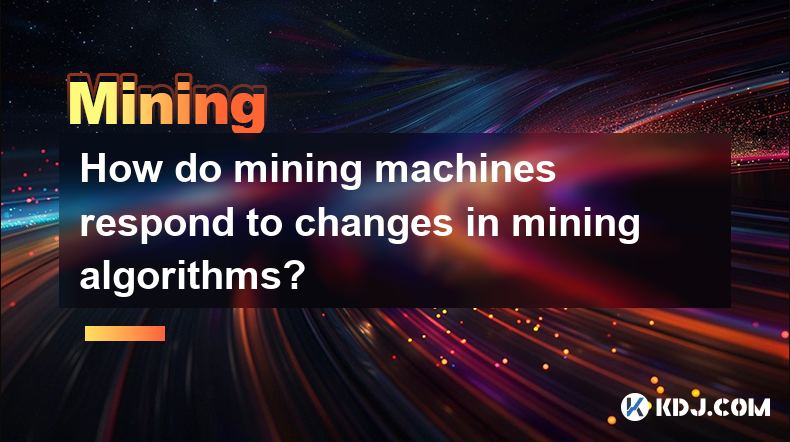
How do mining machines respond to changes in mining algorithms?
Apr 03,2025 at 07:07am
Mining machines are essential components of the cryptocurrency ecosystem, particularly for Proof of Work (PoW) blockchains like Bitcoin. These machines are designed to solve complex mathematical problems to validate transactions and add them to the blockchain. However, the algorithms that govern these mining processes can change, impacting the efficienc...
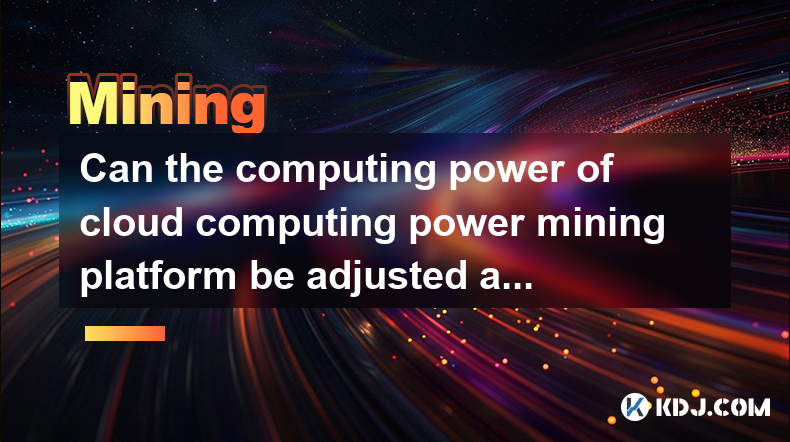
Can the computing power of cloud computing power mining platform be adjusted at any time?
Apr 03,2025 at 07:28am
Introduction to Cloud Computing Power Mining PlatformsCloud computing power mining platforms have revolutionized the way individuals and organizations participate in cryptocurrency mining. These platforms allow users to rent computing power from a pool of resources, enabling them to mine cryptocurrencies without the need for expensive hardware. A common...
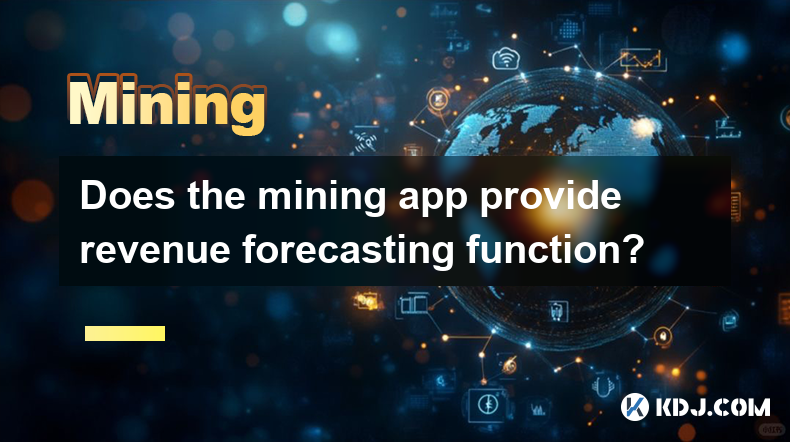
Does the mining app provide revenue forecasting function?
Apr 03,2025 at 07:22am
In the world of cryptocurrency, mining apps have become essential tools for miners looking to maximize their profits. One key feature that many miners seek in these apps is a revenue forecasting function. This article will explore whether mining apps provide such a function, how it works, and what benefits it offers to users. What is a Revenue Forecast...
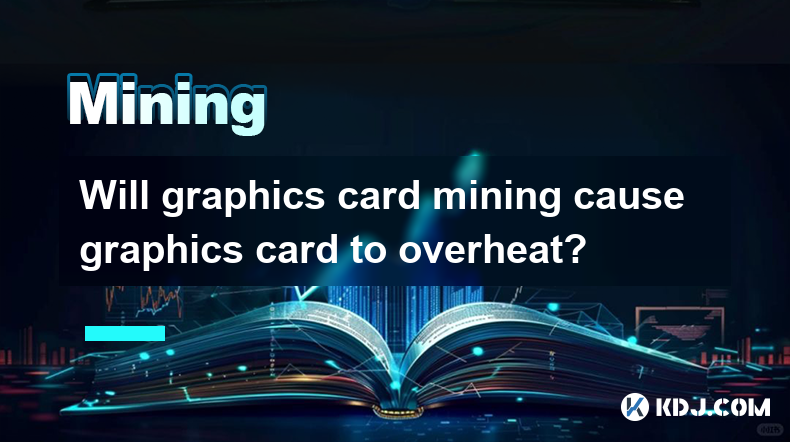
Will graphics card mining cause graphics card to overheat?
Apr 03,2025 at 06:49am
Mining cryptocurrencies with graphics cards has become increasingly popular, but it raises concerns about the potential for overheating. Graphics cards are designed to handle high-performance tasks, but continuous mining can push them to their limits. The heat generated during mining can affect the card's performance and longevity. Understanding the fac...
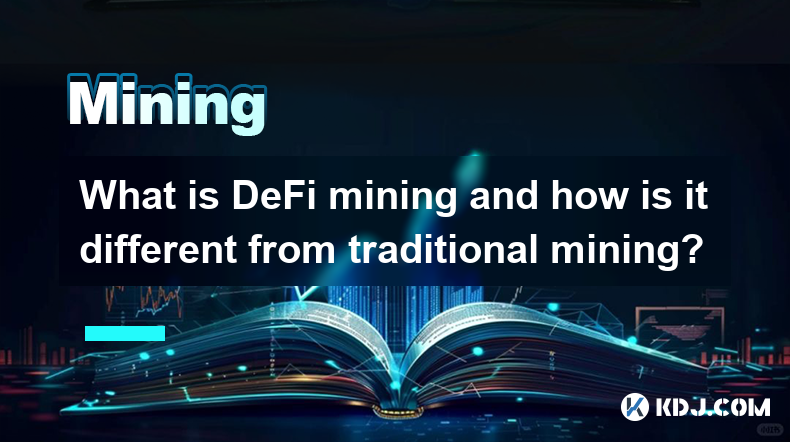
What is DeFi mining and how is it different from traditional mining?
Apr 02,2025 at 09:50am
DeFi mining, also known as yield farming or liquidity mining, is a process within the decentralized finance (DeFi) ecosystem where users provide liquidity to decentralized platforms in exchange for rewards. Unlike traditional mining, which involves solving complex mathematical problems to validate transactions and add them to a blockchain, DeFi mining f...
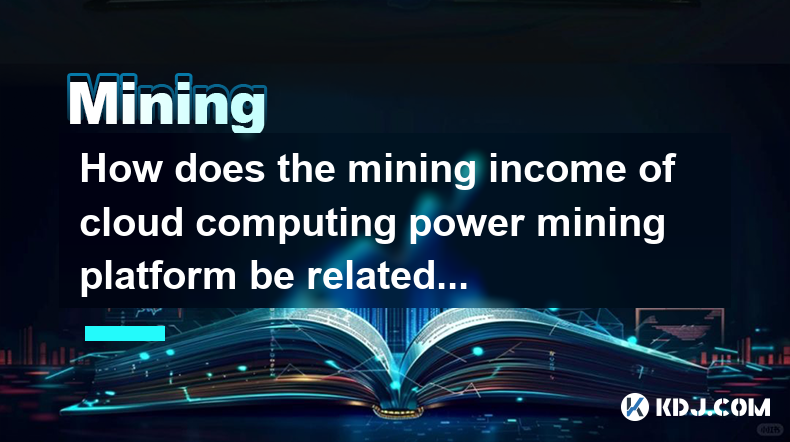
How does the mining income of cloud computing power mining platform be related to mining pool allocation?
Apr 02,2025 at 01:56am
The relationship between the mining income of a cloud computing power mining platform and the allocation of mining pools is a crucial aspect of cryptocurrency mining. Mining income is influenced by various factors such as the efficiency of the mining hardware, electricity costs, and the specific cryptocurrency being mined. However, the allocation of min...

How do mining machines respond to changes in mining algorithms?
Apr 03,2025 at 07:07am
Mining machines are essential components of the cryptocurrency ecosystem, particularly for Proof of Work (PoW) blockchains like Bitcoin. These machines are designed to solve complex mathematical problems to validate transactions and add them to the blockchain. However, the algorithms that govern these mining processes can change, impacting the efficienc...

Can the computing power of cloud computing power mining platform be adjusted at any time?
Apr 03,2025 at 07:28am
Introduction to Cloud Computing Power Mining PlatformsCloud computing power mining platforms have revolutionized the way individuals and organizations participate in cryptocurrency mining. These platforms allow users to rent computing power from a pool of resources, enabling them to mine cryptocurrencies without the need for expensive hardware. A common...

Does the mining app provide revenue forecasting function?
Apr 03,2025 at 07:22am
In the world of cryptocurrency, mining apps have become essential tools for miners looking to maximize their profits. One key feature that many miners seek in these apps is a revenue forecasting function. This article will explore whether mining apps provide such a function, how it works, and what benefits it offers to users. What is a Revenue Forecast...

Will graphics card mining cause graphics card to overheat?
Apr 03,2025 at 06:49am
Mining cryptocurrencies with graphics cards has become increasingly popular, but it raises concerns about the potential for overheating. Graphics cards are designed to handle high-performance tasks, but continuous mining can push them to their limits. The heat generated during mining can affect the card's performance and longevity. Understanding the fac...

What is DeFi mining and how is it different from traditional mining?
Apr 02,2025 at 09:50am
DeFi mining, also known as yield farming or liquidity mining, is a process within the decentralized finance (DeFi) ecosystem where users provide liquidity to decentralized platforms in exchange for rewards. Unlike traditional mining, which involves solving complex mathematical problems to validate transactions and add them to a blockchain, DeFi mining f...

How does the mining income of cloud computing power mining platform be related to mining pool allocation?
Apr 02,2025 at 01:56am
The relationship between the mining income of a cloud computing power mining platform and the allocation of mining pools is a crucial aspect of cryptocurrency mining. Mining income is influenced by various factors such as the efficiency of the mining hardware, electricity costs, and the specific cryptocurrency being mined. However, the allocation of min...
See all articles
























































































